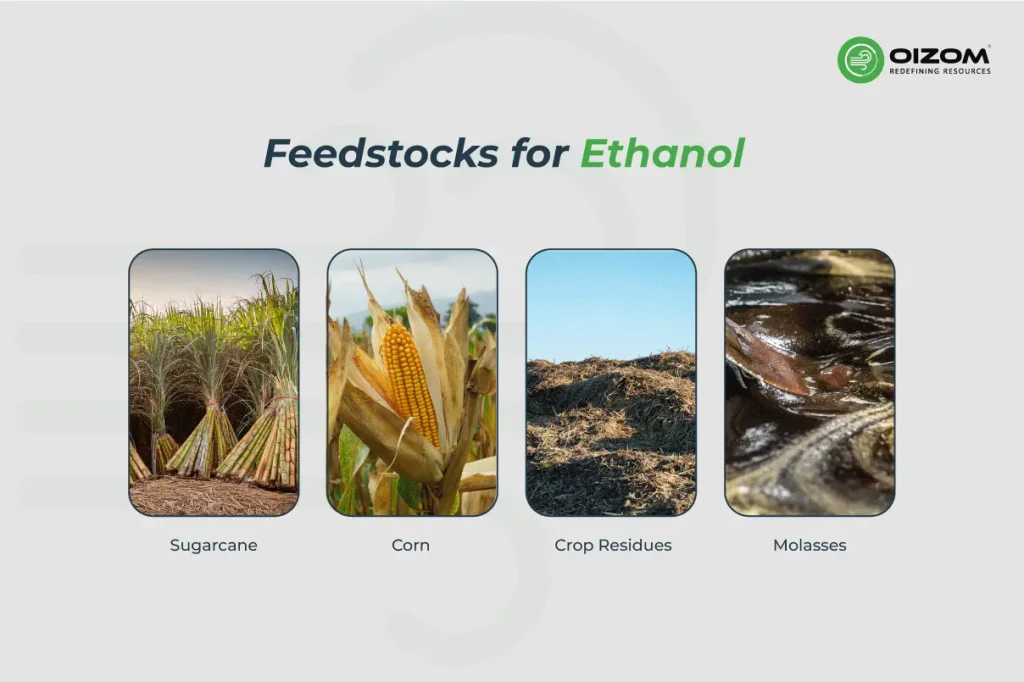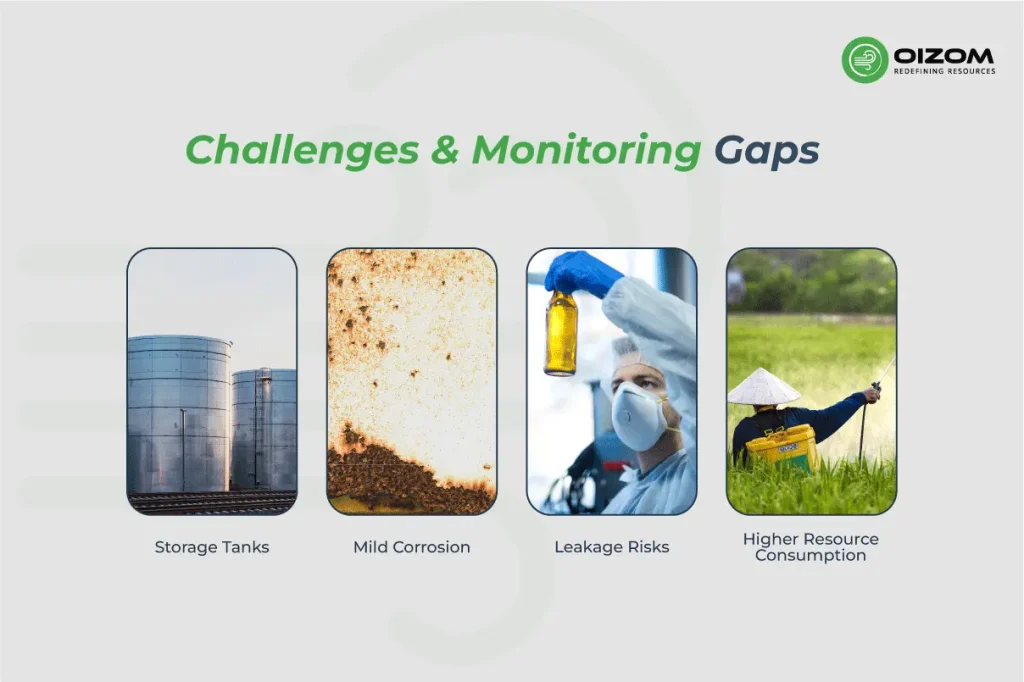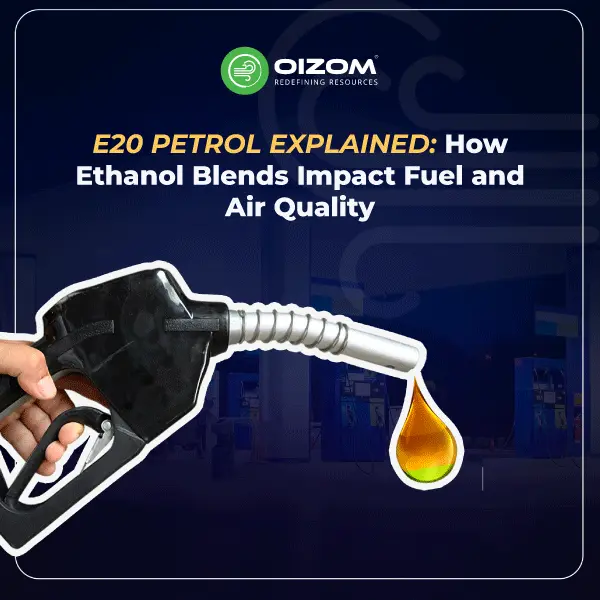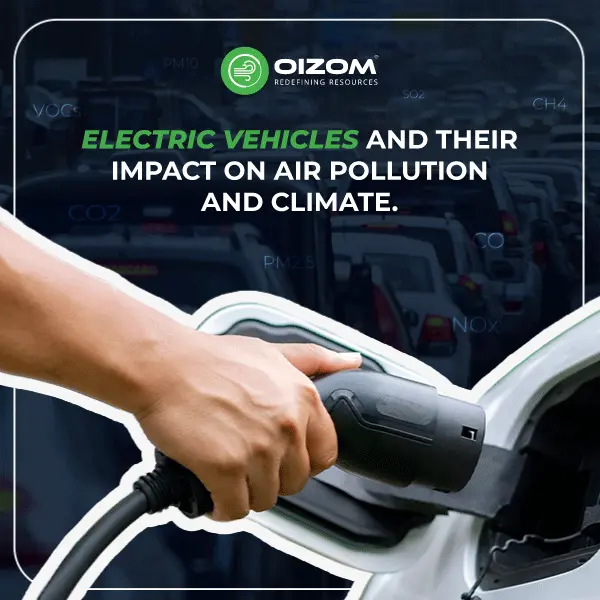Summary
Did you know that mixing just 20% ethanol with petrol can considerably lower emissions while supporting local economies? The E20 petrol blend, which is 80% petrol and 20% ethanol, goes beyond ordinary petrol. It delivers measurable environmental benefits by reducing greenhouse gases, carbon monoxide, and particulate matter, making the city’s air cleaner and healthier.
Apart from its environmental benefits, E20 has economic and technological value. It benefits farmers by providing a market for residues and crops, promotes rural employment, and contributes to a local biofuel supply chain. For engines, the increased octane fuel of E20 minimizes engine knock and opens up possibilities for more efficient, higher-performance engines in the future. Although there are challenges, such as vehicle acceptability, infrastructure upgrades, and public awareness, careful rollout and policy support can make this transition seamless.
E20 paves the way for advanced alternative options in the changing energy sector, such as flex-fuel vehicles, E85, and hydrogen blends. Understanding E20 now can help readers stay informed about fuel choices, emerging technologies, and the broader energy transition.
E20 Petrol Explained: How Ethanol Blends Impact Fuel and Air Quality
Imagine a filling station offering a fuel mix that’s not only petrol but also partially renewable, which will lower emissions, decrease oil imports, and help local farmers. That’s what E20 petrol is. As India transitions to a greener, more sustainable energy era, E20 is becoming a crucial stop along the way. Globally, nations are already operating millions of vehicles on ethanol blends, and India’s proposal to introduce E20 by 2025 is a sign that a new era in transportation is on the horizon.
But what is E20 petrol, and why is it such a fuss? Beyond being a new name on the pump, it’s a highly developed mix that alters the way engines consume fuel, the way emissions are discharged into the air, and even the way farmers are involved in the energy economy. In this blog, we will discuss what E20 petrol is, how it works, its economic and environmental benefits, global success stories, and the challenges we still face. When you’re done, you’ll see that this fuel isn’t another choice; it’s a look into the future of mobility.
What is E20 Petrol and Why Does It Matter for Air Quality?
E20 petrol is a mixture of 80% petrol (gasoline) and 20% ethanol. Ethanol is a biofuel derived from renewable resources, such as sugarcane, corn, or crop residues, molasses, whereas petrol is derived from fossil fuels. By mixing them, E20 lessens the dependence on crude oil and makes fuel more sustainable.
Ethanol, a biofuel derived from renewable resources such as sugarcane, corn, or crop residues, is produced by fermenting plant sugars. This refined ethanol is then blended with petrol in specific ratios such as E5, E10, or E20. This process not only reduces our reliance on crude oil but also enhances the efficiency of fuel combustion, leading to cleaner emissions.
Unlike petrol, ethanol is made from renewable sources and contains oxygen within its chemical makeup, enhancing combustion. Petrol, however, is sourced from non-renewable fossil deposits and emits more toxic gases on combustion. Such a fundamental difference makes ethanol blends such as E20 cleaner for the environment and sustainable for the future.E20’s higher octane value lowers the engine knock. It enables efficient fuel burning, potentially boosting engine performance with a slight drop in mileage due to ethanol’s lower energy density.
Global E20 Adoption and Air Quality Insights

Globally, nations are integrating ethanol-blended fuels, such as E20, to address both environmental and economic challenges. Ethanol, derived from crops such as sugarcane, corn, and agricultural residues, serves as a renewable biofuel that reduces greenhouse gas emissions and promotes cleaner combustion. At the same time, blending ethanol lowers reliance on crude oil imports. It protects economies from the volatile fuel market, resulting in mutual benefits for both the environment and energy security. Besides, the majority of new vehicles today can run on E20 without modifications, but older vehicles may require modifications, making phased adoption and public awareness essential.
In India, the implementation of E20 is closely tied to BS6-II emission norms and the national strategy for cleaner transportation. The implementation is designed to minimize vehicle emissions, enhance air quality, and reduce the nation’s oil import bill. It also creates emerging opportunities for the agricultural sector, as growing ethanol demand boosts earnings for sugarcane cultivators and allows for the productive use of crop residues.
This transition means more than just a new type of fuel at the pump; it reflects cleaner air, a smaller carbon footprint, and greater energy independence. It’s a concrete step toward a sustainable future where transportation can be both efficient and sustainable.
Environmental Impact of E20
A transition to E20 petrol has measurable environmental benefits. Ethanol is oxygenated, helping to achieve a more complete combustion of fuel, which results in a reduction of major tailpipe emissions, such as carbon dioxide (CO₂), carbon monoxide (CO), unburned hydrocarbons (HC), and particulate matter (PM).
On average, E20 usage can reduce CO₂ emissions by approximately 2–3% per litre of fuel as compared to pure petrol. Based on India’s fuel demand, it is estimated that this amounts to millions of tonnes of CO₂ saved every year, and therefore serves as a significant contributor to reducing the nation’s carbon footprint.
Cleaner burning also reduces urban air pollution, resulting in less smog and healthier air for city residents. Lower exposure to carbon monoxide and fine particles can directly decrease the risk of respiratory issues such as asthma and bronchitis, making the benefits of E20 something city residents can experience in their daily lives. Apart from this, the E20 implementation boosts demand for crops like sugarcane, generates rural employment, and supports local biofuel supply chains, resulting in both environmental and economic benefits.
In addition to local benefits, this greenhouse gas reduction furthers India’s climate action agenda, including its Paris Agreement pledges and long-term net-zero targets. E20 is thus not only a cleaner fuel but also a step towards aligning daily transportation with broader climate and public health goals.
Global Examples: Learning from Global E20 Adoption
Brazil is a worldwide success story with its Flexible-Fuel Vehicles (FFVs). They can operate on any blend of petrol and ethanol, from straight petrol to high-ethanol blends such as E85. FFVs adjust the engine settings and fuel injection automatically to achieve optimal performance, and they are both flexible and user-friendly. In the present day, most new vehicles sold in Brazil are FFVs, an indicator of how technology and infrastructure can collaborate to make ethanol adoption effortless.
In other parts of the world, the adoption of ethanol has also advanced. The US has extensively adopted E10–E15 blends to support energy security and cleaner burning. Various EU nations have implemented biofuel requirements in stages, and some areas in Asia are testing E10/E20 to help curb emissions and encourage the use of renewable fuels. These schemes demonstrate how phased adoption, firm fuel regulations, and infrastructure preparedness are the most important success factors.
Policy support is another driving factor behind these success stories. Brazil employs ethanol price parity policies to maintain the competitiveness of ethanol with gasoline, and the US provides tax credits for biofuel producers, attracting investment and innovation. The same policy incentives in India can fast-track E20 adoption by making ethanol economically attractive, incentivizing manufacturers to produce compatible vehicles, and providing support for fuel infrastructure upgrades.
Lessons for India and the world are that there is a need for phased implementation, making cars compatible with higher ethanol content, and informing consumers about their fuel choices. By observing international examples, nations can successfully implement ethanol, reconciling environmental benefits, technical readiness, and public appeal.
Challenges & Monitoring Gaps

Although E20 adoption presents numerous advantages, there are practical problems to be managed. Fuel stations require infrastructural upgrades to their storage tanks, pipelines, and dispensing pumps to mitigate corrosion and leakage risks associated with the use of ethanol blends.
Ethanol itself is hygroscopic, meaning it can absorb water and potentially create fuel quality issues if not stored optimally. Ethanol is mildly corrosive in nature, which is why vehicles require compatible materials in their fuel systems to avoid damage. On the farm side, the production of vast quantities of ethanol can lead to increased consumption of land, water, and fertilizers. But the arrival of second-generation ethanol sourced from crop residues and waste reduces such pressure and helps build a more sustainable system.
Moreover, real-time air quality gaps make it difficult to fully measure the advantages of adopting E20. The implementation of advanced monitoring technology, from Oizom, can inform pollutant reductions, influence planning, and confirm that cleaner fuels result in measurable improvements in air quality.
E20’s launch may also have a limited impact on fuel costs. Ethanol-mixed fuel may be relatively cheaper due to government subsidies; however, this could be influenced by crop yields and global oil prices. Consumer awareness is also equally important: awareness campaigns should be conducted to inform drivers if their car is compatible with E20 and the potential effects on fuel efficiency and maintenance.
Ultimately, vehicle compatibility remains a key limitation, as older vehicles, not designed for E20, may experience performance or durability issues, underscoring the importance of a step-by-step approach and public awareness.
Conclusion
E20 petrol is being gradually introduced, with plans to implement higher ethanol blends as technology and infrastructure evolve. Improvements in biofuel technology, such as cellulosic and second-generation ethanol, aim to deliver more efficient and sustainable production, thereby reducing pressure on food crops and water use.
E20 is not just a fuel choice; it signifies progress toward cleaner air, reduced oil imports, and a self-reliant energy future. Although challenges exist, including infrastructure upgrades and vehicle compatibility, the advantages of reduced emissions, rural economic support, and renewable energy integration make it a key component of the global sustainability roadmap. Real-time air quality monitoring solutions from Oizom can help track the impact of cleaner fuel adoption on the environment, providing actionable data-driven insights to ensure cleaner fuels result in observable changes in urban air.
The effective adoption of E20 relies on technological advancements, effective policy execution, and public awareness. Collectively, these measures ensure that E20 fulfills its potential for a cleaner, greener, and more resilient energy future. Looking forward, E20 can lay the foundation for cleaner alternatives, such as flex-fuel vehicles running on E85, hydrogen-enriched fuels, and other advanced energy solutions, enabling a broader and more ambitious clean fuel transition.






